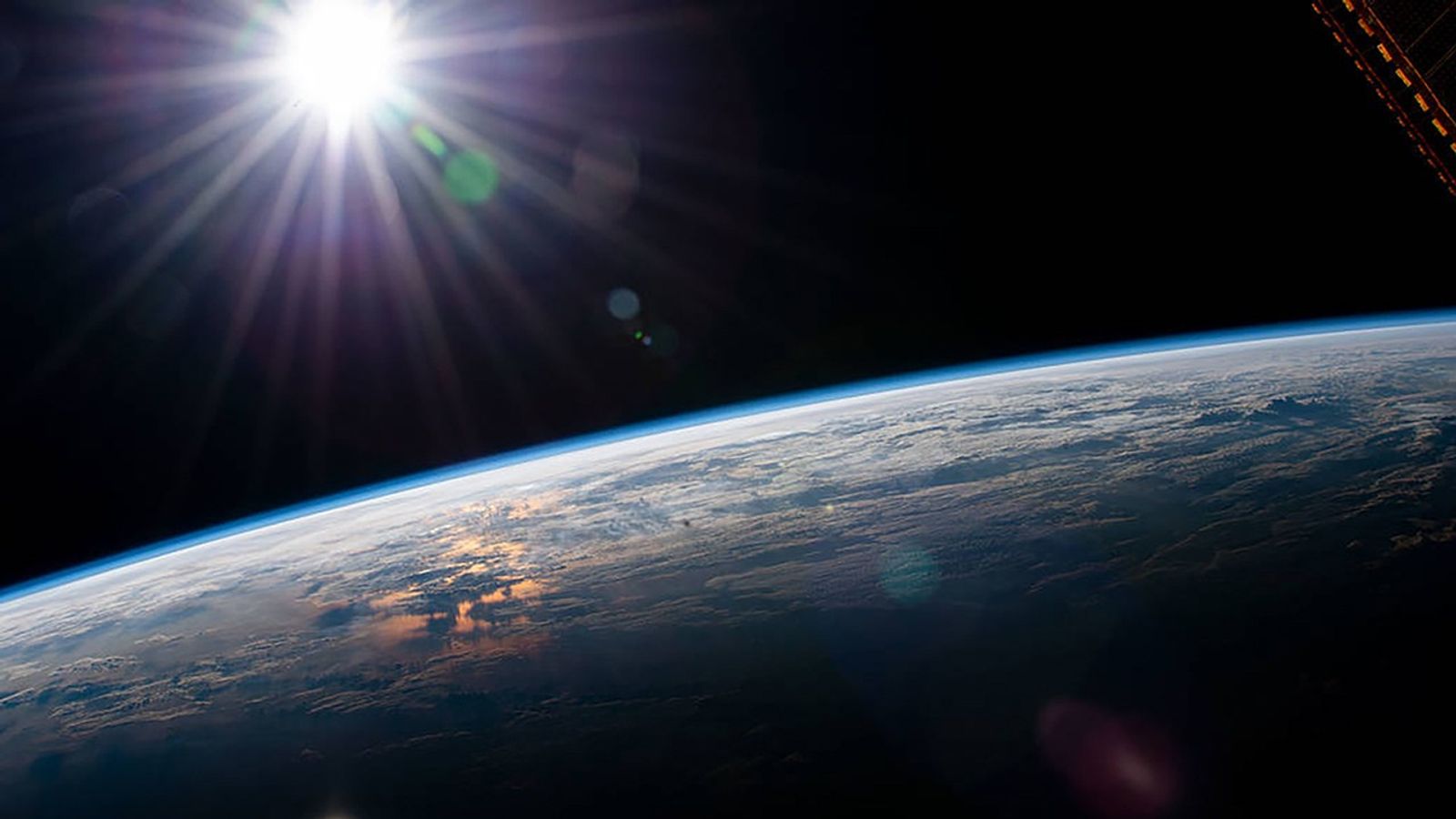
NASA’s work has generated countless spinoffs that are now on the front lines of the fight against climate change. That shouldn’t be a surprise, since the agency’s missions include studying Earth and improving aircraft efficiency.
But that’s not the only way NASA’s innovations make an impact. Many advances to meet the harsh demands of space travel are also helping to reduce greenhouse gases, improve alternative energy sources, and increase our understanding of the causes and effects of climate change.
Read on for a few examples, and head over to spinoff.nasa.gov/climate-change for a roundup of dozens more.
Get NASA's Climate Change News: Subscribe to the Newsletter »
Trapping Greenhouse Gases
Carbon dioxide, a greenhouse gas, is the most prominent driver of climate change on Earth. On Mars, however, where most of the atmosphere is CO2, the gas could come in handy. Under NASA contracts, one engineer helped develop technology to capture Martian carbon dioxide and break it into carbon and oxygen for other uses, from life support to fuel for a journey home.
Although it never flew, Perseverance will test out a similar idea, using an experimental system called MOXIE (Mars Oxygen In-Situ Resource Utilization Experiment). Meanwhile, the earlier technology led to a system that now captures natural gases at oil wells, instead of wastefully burning them off and dumping the resulting CO2 into the atmosphere.
And another version of the system helps beer breweries go “greener” by capturing carbon dioxide from the brewing process, rather than venting it, and using it for carbonation instead of buying more.
Conserving Energy
Conserving energy is a crucial consideration for space travel, and many innovations NASA has come up with in that arena are now widespread in improving energy efficiency on Earth.
For example, NASA helped create a type of reflective insulation to efficiently maintain a comfortable temperature within spacecraft and spacesuits. In the decades since, this insulation has been adapted and used in homes and buildings around the world.
Another material pioneered to insulate cryogenic rocket fuel against the balmy weather around the launch pad at Cape Canaveral, Florida, now saves energy by preserving temperatures at industrial facilities. And a coating invented to protect spacecraft during the extreme heat of atmospheric entry improves the efficiency of incinerators, boilers, and refractories, ovens, and more.
Shrinking Air Travel’s Carbon Footprint
Air travel is a major contributor to human-made greenhouse gases. Designing aircraft to fly more efficiently reduces the amount of fuel they burn, and in turn, their resulting emissions. And many of the improvements that make modern aircraft more efficient come straight from NASA.
In fact, some of the agency’s most significant contributions to aeronautic fuel efficiency can be traced back to the work of a single NASA engineer in the 1960s and ’70s. Richard Whitcomb designed and tested an entirely new wing shape – the supercritical wing – that significantly increased efficiency at high speeds and eliminated weight.
He then designed upturned wingtips that make use of air vortices that would otherwise create drag. Now incorporated into nearly all commercial planes, these advances combined save billions of dollars’ worth of fuel, along with associated CO2 emissions, every year.
In the decades since, NASA has continued to work with industry partners to improve airplane efficiency, and the agency is now supporting the cutting edge of all-electric flight.
Advancing Renewable Energy
Because there are no fossil fuels on Mars, NASA became interested in wind energy to power future Martian operations. So, the space agency helped a company develop a wind turbine that could operate in a similarly harsh environment – the South Pole. Rugged and designed for easy maintenance and efficiency at extremely low temperatures, more than 800 of the resulting turbines are now generating power on Earth.
Unexpectedly, software NASA supported for improved aircraft design and maintenance has also led to more efficient, long-lasting wind turbines. And several solar panel manufacturers have benefited from the agency’s long reliance on the sun for energy.
Understanding Climate Change
Mountains of data from a fleet of Earth-observing NASA satellites help countless other agencies, researchers, and companies better understand the causes and effects of climate change. The agency has worked with commercial partners to make this data manageable and easier to mine for information. Other companies have benefited from NASA’s support for technology to monitor conditions on the ground and in the oceans and atmosphere, including innovative devices to sense local greenhouse gases and ocean conditions. The resulting data helps to verify and enrich the agency’s models of Earth weather and climate, which span decades, circle the globe, and peer into the future.
NASA has a long history of transferring technology to the private sector. The agency’s Spinoff publication profiles NASA technologies that have transformed into commercial products and services, demonstrating the broader benefits of America’s investment in its space program. Spinoff is a publication of the Technology Transfer program in NASA’s Space Technology Mission Directorate.
For more information on how NASA brings space technology down to Earth, visit:



































